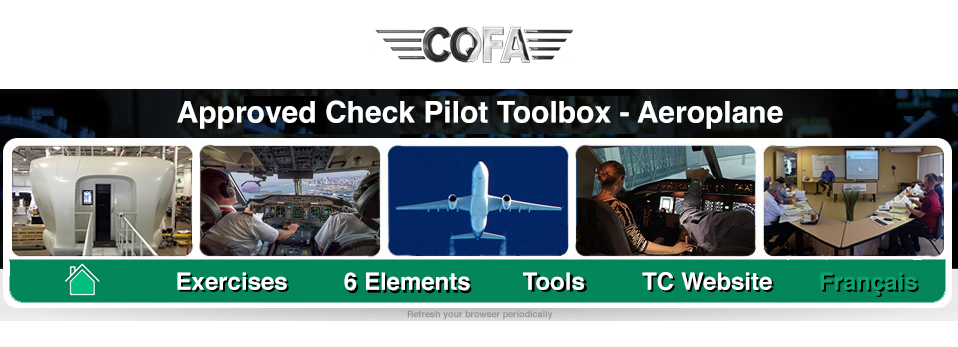14. Descent (DST)
Aim
Determine the candidate’s ability to comply with visual or instrument arrival procedures, as applicable.
Description
Descent begins when the crew departs the cruise altitude for the purpose of an approach at a particular destination and ends when the crew initiates changes in aircraft configuration and/or speeds to facilitate a landing on a particular runway. It also may end by the crew initiating an "En Route Climb" or "cruise" phase.
The candidate will complete the arrival procedures, as cleared, in accordance with Instrument Flight Rules or Visual Flight Rules, as applicable. In addition, the candidate will demonstrate the proper programming and use of Flight Management Systems as applicable.
Performance Criteria
(06/2017 FTG p.30) Assess on the candidate’s ability to:
- demonstrate adequate knowledge of En Route Low and High Altitude Charts, STAR’s/FMS Procedures, Instrument Approach Procedure Charts, VFR Charts, as applicable, and related pilot and controller responsibilities;
- select and identify the navigation aids associated with the proposed arrival phase;
- select and correctly identify all instrument references, flight director and autopilot controls, and navigation and communications equipment associated with the arrival;
- perform the aeroplane checklist items appropriate to the arrival;
- select and establish communications with ATC, using proper phraseology;
- comply, in a timely manner, with all ATC clearances, instructions, and restrictions;
- demonstrate adequate knowledge of two-way communications failure procedures;
- intercept, in a timely manner, all tracks, radials and bearings appropriate to the procedure, route, ATC clearance, or as directed by the ACP;
- correctly adhere to visual or instrument arrival procedures;
- adhere to airspeed restrictions and adjustments required by regulations, ATC, the POH/AFM, SOP’s or the ACP;
- establish, where appropriate, a rate of descent consistent with the aeroplane operating characteristics and safety;
- maintain the appropriate airspeed/V-speed within ±10 knots, but not less than VREF, if applicable; heading ±10°; altitude within ±100 feet; and accurately tracks radials, courses, and bearings;
- complies with the provisions of the Profile Descent, STAR, and other arrival procedures, as appropriate; and
- maintain proper aircraft control and flight within operating limitations.
Commenting a "1"
- Failed to follow STAR (or transition).
- Did not properly identify navaids and/or approach facilities.
- Altitude, heading or airspeed allowed to deviate (__Qty__) due to pre-occupation or poor cockpit management.
- Breached accepted and acknowledged ATC clearance.
- Arrival not correctly programmed, leading to altitude deviation of ____ feet.
- Did not monitor the flight guidance modes leading to confusion and missed STAR steps.
- Failure to select and display GPS pages according to company SOPs.
- Unable to correctly program the GPS for a change of destination or to activate an alternate transition, approach, or flight plan.
- Breached airspeed limitation crossing below 10 000' (CAR 602.32), IAS (____ kts) until (____ ft).
- Exceeded cleared decent altitude by (___ft).
Commenting a "2"
- Not familiar with STAR (or transition) creating confusion and late configuration.
- Initial incorrect selection of navaids requiring level off and reloading.
- Altitude, heading or airspeed allowed to deviate due to preoccupation or poor cockpit management, requiring prompts by other CM.
- Attempted to follow a procedure that would violate an accepted and acknowledged ATC clearance or instruction, or endanger the aircraft. Corrected when prompted by other CM.
- Arrival not correctly programmed or failure to monitor the flight guidance modes.
- Failure to select and display GPS pages according to company SOPs.
- Navaids identification not according to SOP. Uses own sequence.
- Unable to correctly program the GPS for a change of destination or to activate an alternate transition, approach, or flight plan.
- Confusion regarding airspeed limitation required interpretation from PNF.
- “1000' before” SOP calls omitted, but recalled by PNF.
